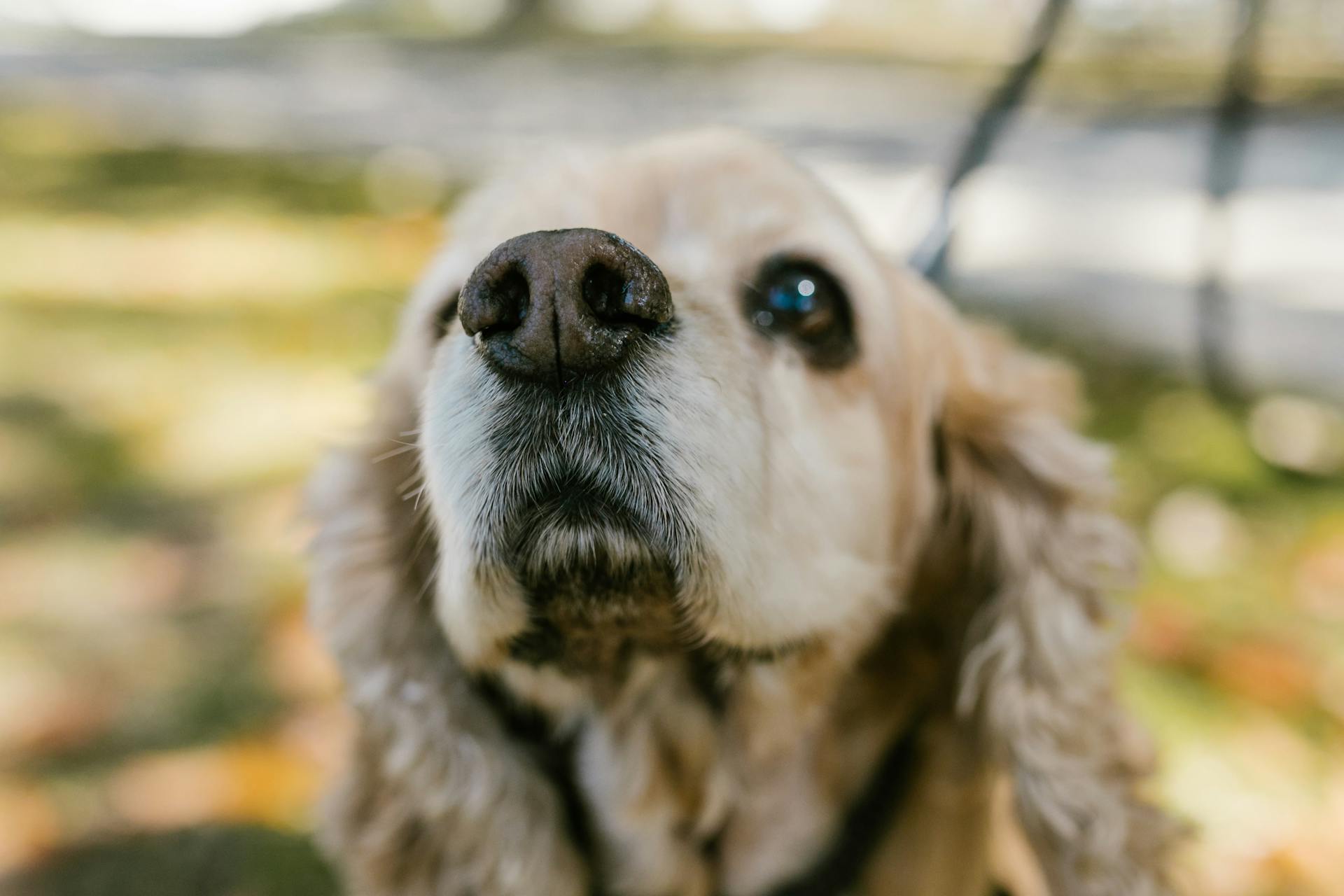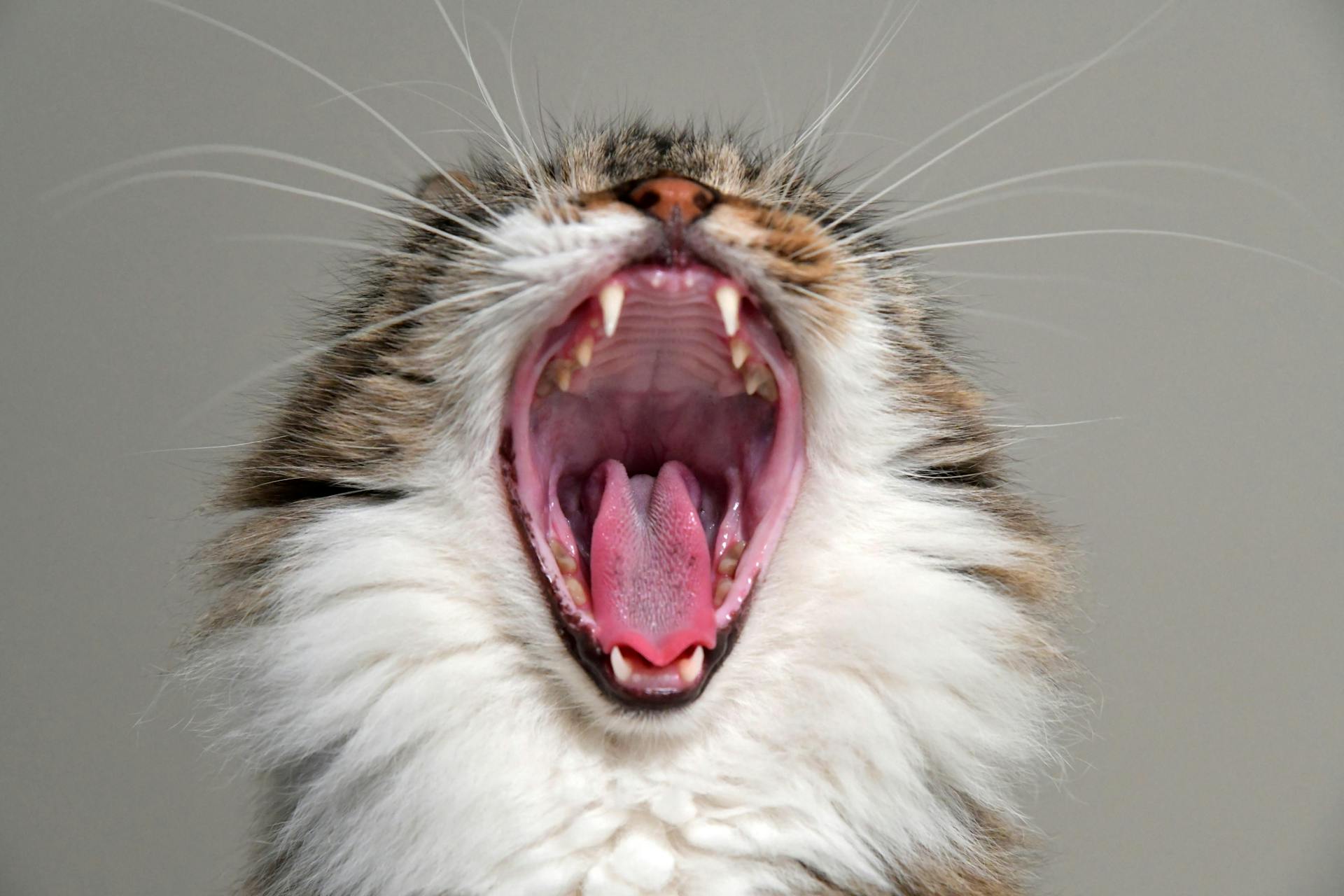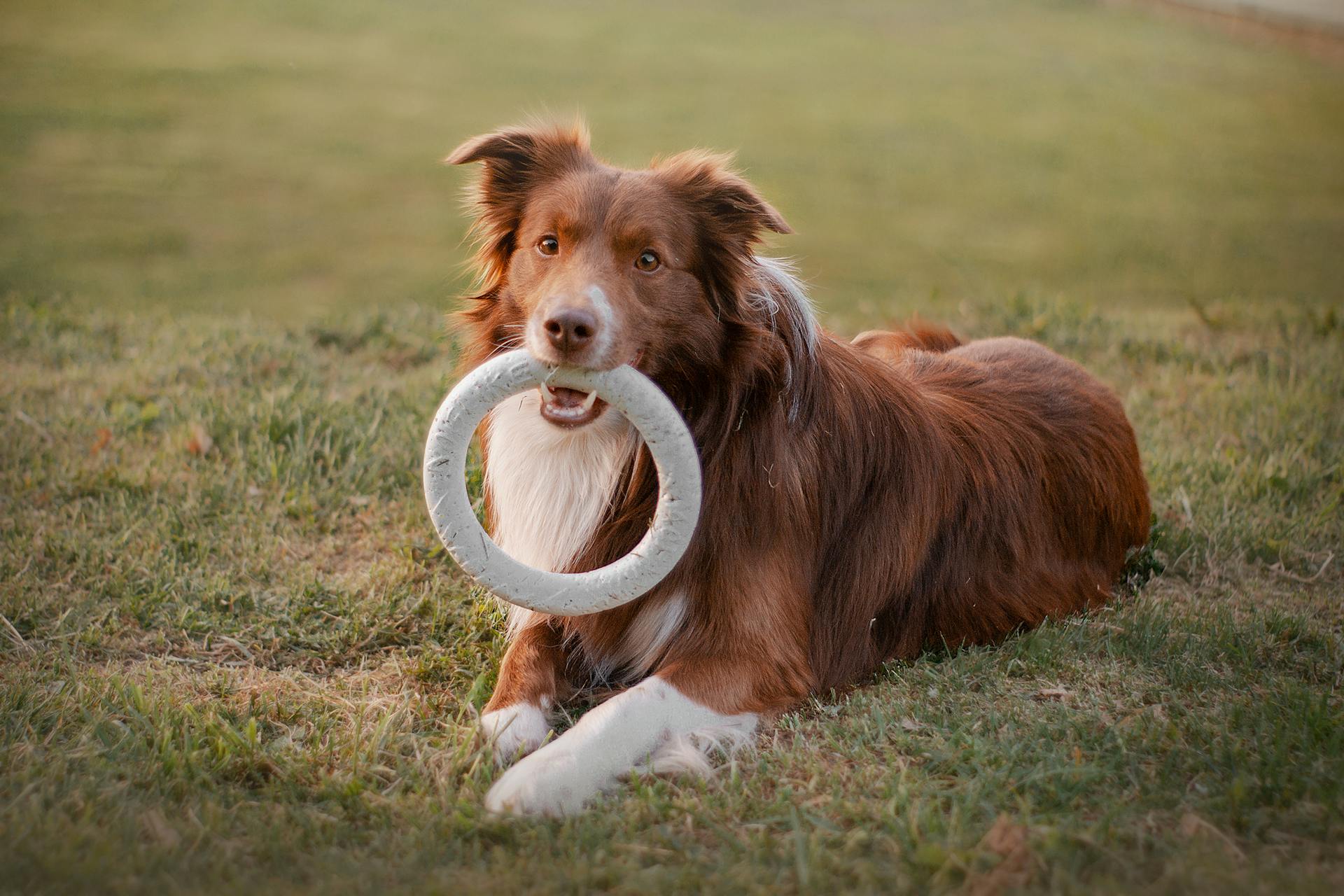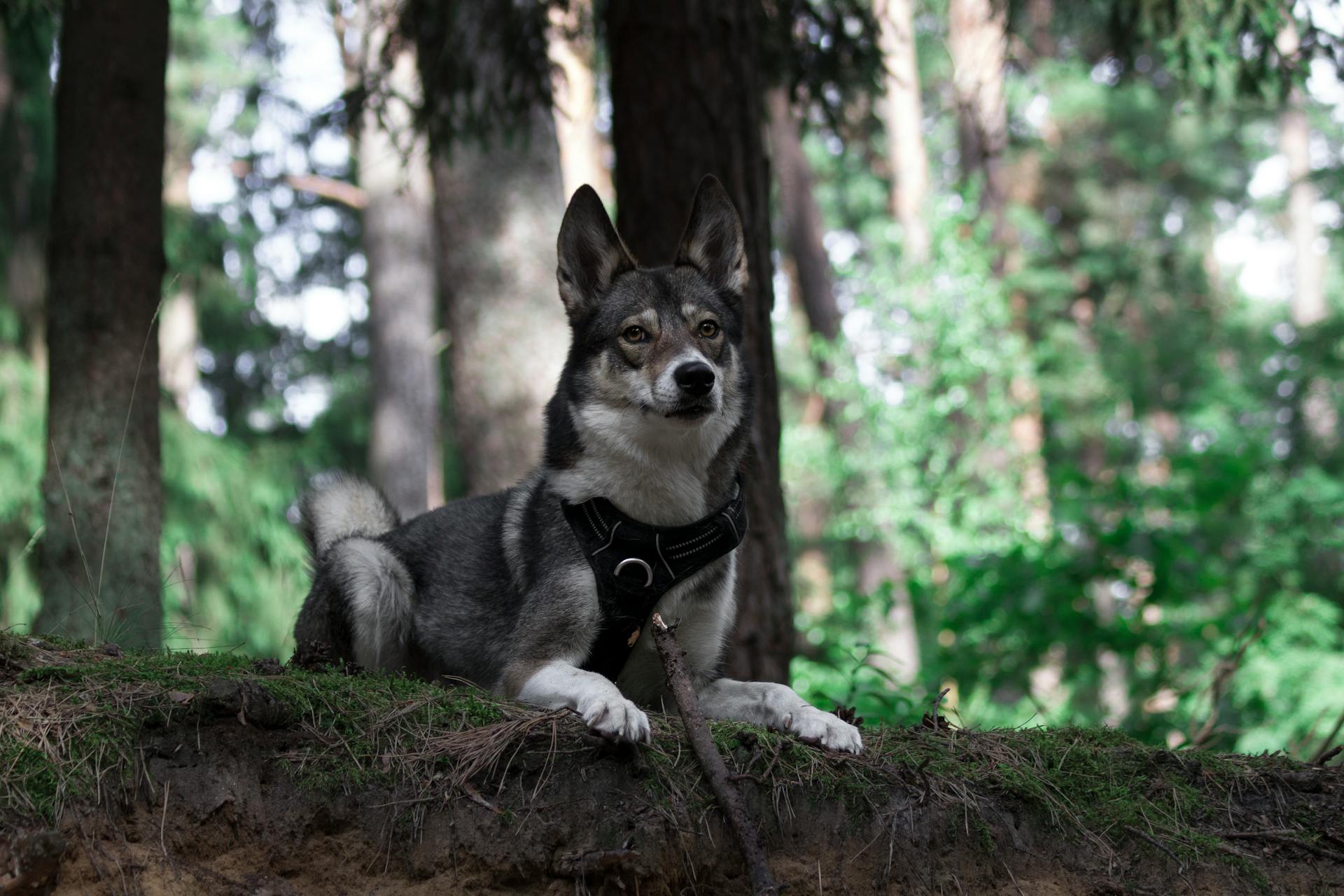
As a pet owner, it's essential to understand the difference between a reverse sneeze and tracheal collapse in canines. A reverse sneeze, also known as inspiratory paroxysm, is a common condition where a dog rapidly breathes in and out through their nose, often accompanied by a loud snorting sound.
This condition is usually caused by irritation in the nasal passages, which can be triggered by allergies, foreign objects, or even excitement. According to research, reverse sneezes can occur in up to 80% of dogs at some point in their lives.
On the other hand, tracheal collapse is a more serious condition where the trachea, or windpipe, collapses due to its ringed structure becoming weakened or damaged. This can lead to severe respiratory distress and potentially life-threatening complications.
A tracheal collapse can be caused by various factors, including genetics, obesity, and chronic coughing.
See what others are reading: Pomeranian Dog Sneeze
What is a Reverse Sneeze?
A reverse sneeze in dogs is a condition that causes the dog to rapidly pull air in through the nose, producing a loud snorting sound.
This condition is also known as paroxysmal respiration, and it's often compared to a dog trying to take a deep breath in while sneezing at the same time.
Most reverse sneezing episodes last for less than a minute, but they can still be alarming for pet parents.
Dogs experiencing a reverse sneeze often raise their head and extend their neck while making a loud snorting noise.
Causes and Prevention
Reverse sneezing in dogs can be caused by a variety of factors, including allergies to pollen and plants, which can irritate the nose and trigger reverse sneezing episodes.
Nasal mites can also contribute to reverse sneezing, so if you suspect your dog has them, it's essential to work with your veterinarian to develop a treatment plan.
Dogs with long snouts are more prone to developing reverse sneezing, but any dog can suffer from this condition.
Anything that irritates the nose or upper throat can cause reverse sneezing, including allergens, smoke, infections, and scented room sprays.
On a similar theme: How to Stop a Dog from Reverse Sneezing
Some common culprits that can lead to reverse sneezing include:
- Allergens (spores, pollen, dust, etc.)
- Smoke
- Infections of the nose and throat
- Scented room sprays, candles, perfumes, etc.
Getting water in the nasal passages can also trigger reverse sneezing, and in some cases, foreign objects stuck in the nose or underlying diseases like tumors can cause it.
Over-excitement, especially in smaller dogs, can also lead to reverse sneezing, so it's essential to keep an eye on your dog's behavior and reactions.
To prevent reverse sneezing, it's crucial to identify and avoid triggers, and keeping your dog in the best overall health possible through routine vaccinations and regular check-ups can help prevent infections and other underlying conditions.
By following these tips and keeping a journal to track your dog's reverse sneezing episodes, you can help prevent this condition and provide your furry friend with a happier, healthier life.
Helping Your Dog
If your dog is experiencing a reverse sneezing episode, stay calm and upbeat to help ease their anxiety and stress. This will help your dog feel more at ease and can even help stop the episode.
Gently pet your dog to help soothe them, but avoid petting their face or snout, as they need to be able to breathe freely. Most dogs will not suffer from reverse sneezing for more than a minute or so.
If your dog is experiencing frequent reverse sneezing episodes, your vet may prescribe antihistamines or a decongestant to help alleviate the issue. However, if your vet doesn't recommend medication, it's likely because the reverse sneezing isn't serious enough to require it.
To help your dog through a reverse sneezing episode, try the following:
- Stay calm and upbeat
- Massage your pet's throat to get them to swallow
- Gently lift their head up and then down
- Distract your dog with a toy, treat, or dinner
By following these tips, you can help your dog feel more comfortable and at ease during a reverse sneezing episode.
Distinguishing and Treatment
Reverse sneezing causes minimal distress and gums remain pink, unlike choking which can be fatal.
If you're ever in doubt, it's always best to see a vet immediately, as no vet will criticize you for being careful.
Reverse sneezing is dramatic and scary, but it's virtually harmless, and most dogs will do it at some time.
Here's a quick way to remember the difference: if the dog is 100% fine immediately before and after the episode, it's likely reverse sneezing.
Treatment of reverse sneezing involves reducing the irritation to the airways, and the best course of action starts with a diagnosis from the vet.
Mild cases may be best left untreated, while infections are usually treated with antibiotics and anti-inflammatories.
For seasonal allergies, antihistamines or cortisone may be prescribed, but it's essential to find out why the dog is experiencing the allergy in the first place.
Symptoms
The symptoms of the condition can be quite varied, but they often include a persistent cough that may produce mucus or blood.
The cough can be dry and hacking, or it can produce a lot of mucus, which can be yellow or green in color.
Related reading: Distemper vs Kennel Cough
In some cases, the cough may be accompanied by a fever, which can range from mild to severe.
A sore throat is another common symptom, which can be painful and make swallowing difficult.
The condition can also cause chest pain or discomfort, especially when coughing or taking deep breaths.
Fatigue and weakness are common complaints, as the body's energy is diverted to fight off the underlying infection.
In severe cases, the condition can lead to shortness of breath or difficulty breathing, which can be a sign of a more serious complication.
Distinguishing Choking
Reverse sneezing can be stopped if you call or distract a dog. This is a good thing to try first, as it's usually effective.
The dog is 100% fine immediately before and afterwards, which is reassuring. However, it's still scary to see, and many people rush their dogs to the vet in a panic.
True choking is often fatal, which is why it's crucial to know the difference. No vet will criticize you for being careful, even if there is nothing wrong.
Here are some key differences between reverse sneezing and choking:
- Reverse sneezing causes minimal distress and gums remain pink.
- True choking is often fatal, so it's essential to know the signs.
If in doubt, see a vet immediately. It's always better to err on the side of caution when it comes to your dog's health.
Treatment
Treatment for reverse sneezing in dogs is all about reducing the irritation to the airways. Always start by getting a diagnosis from your vet to determine the likely cause.
Mild cases may be best left untreated. However, if your dog's symptoms are severe or persistent, it's essential to seek veterinary care.
Infections are usually treated with antibiotics and anti-inflammatories. This can help alleviate your dog's symptoms and prevent the infection from spreading.
Seasonal allergies can respond to antihistamines, but it's crucial to find out why your dog is experiencing allergies in the first place. Your vet may need to give your dog cortisone to help manage symptoms.
Dogs with short faces, also known as brachycephalic breeds, can get into a vicious circle of inflammation and worsening signs. In these cases, a cortisone injection may be necessary to settle airway swelling and reduce distress.
Discover more: Cure Reverse Sneezing Dogs
Is It Harmful?
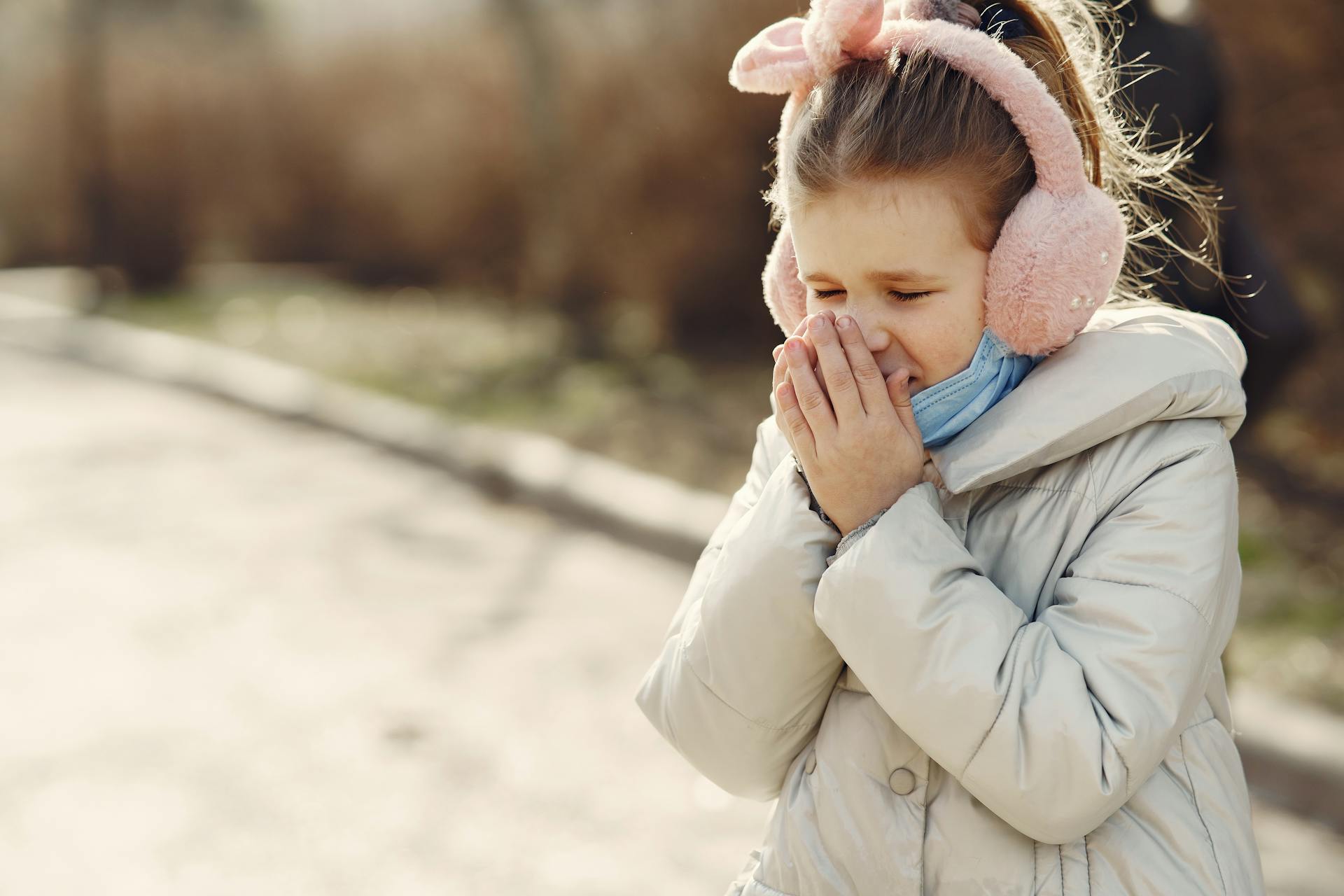
For most dogs, a reverse sneeze is nothing to be concerned about. It usually only lasts for less than a minute and dogs return to their activities afterward.
However, if your dog has suddenly developed reverse sneezing, it's always a good idea to have them examined by your veterinarian to determine the right diagnosis.
Some symptoms that can point to other conditions, such as asthma, heart disease, or tracheal collapse, include labored breathing and ongoing coughing.
Labored breathing and coughing can be signs of a more serious underlying health problem.
If your dog is panting, breathing with their mouth open, or showing a lack of interest in exercise, it may be a cause for concern.
A veterinarian should be consulted if your dog is lethargic, has pale or blue gums, or any other concerning symptoms.
Here are some signs that may point to an underlying health problem:
- Labored breathing
- Ongoing, consistent cough
- Frequent wheezing
- Panting
- Open-mouthed breathing
- Lethargy
- Lack of interest in exercise
- Pale or blue gums
Frequently Asked Questions
Is reverse sneezing the same as tracheal collapse?
No, reverse sneezing and tracheal collapse are not the same. While both can cause unusual breathing sounds, a reverse sneeze sounds like a sneeze and inhale at the same time, whereas a collapsing trachea makes a distinctive honking cough sound
What does a tracheal collapse sound like?
A tracheal collapse is often accompanied by a harsh, dry, and persistent "goose-honking" cough. In more severe cases, a wheezing noise may also be heard when breathing in.
What can be mistaken for reverse sneezing in dogs?
Reverse sneezing in dogs can be mistaken for respiratory distress, coughing, or choking, making it essential to identify the correct symptoms to provide proper care. If you suspect your dog is experiencing a reverse sneeze, look for distinctive sounds and behaviors to ensure timely intervention.
How do I know if my dog has a collapsed trachea?
Look for a persistent, harsh, and dry cough, often described as a 'goose-honking' sound, which may progress to wheezing, difficulty breathing, or other concerning symptoms
Sources
- https://lakecityanimalhospital.com/blog/reverse-sneezing-in-dogs-causes-and-what-to-do/
- https://www.berkeleydogandcat.com/site/blog/2022/05/15/dog-reverse-sneeze
- https://www.walkervillevet.com.au/blog/reverse-sneezing-dog/
- https://bondvet.com/b/reverse-sneezing-in-dogs
- https://www.bartonheights.com/site/blog/2022/04/25/all-about-the-reverse-sneeze-in-dogs
Featured Images: pexels.com
